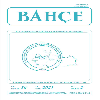İki farklı sıcaklığın trabzonhurması' nda L-Askorbik asit (C vitamini) içeriği, muhafaza ömrü ve meyve kalite kriterleri üzerine etkileri
Bu araştırma 1998-1999 yılında Girit Adasında Mediterranean Agronomic Institute'e ait, laboratuvarda yürütülmüştür. Deneme, Hanya şehrindeki Alikianos bölgesinden alınan domates şekilli buruk, çekirdeksiz yerel bir trabzonhurmasında (Diopyros kaki L.) yapılmıştır. Meyveler derim olumunda 18 Kasımda toplanmıştır. Çalışmada, 20PC ve 0$circ$C muhafaza sıcaklıklarının ve %85-90 oransal nemin, meyvelerin suda çözünebilir kuru madde miktarına, meyve eti sertliğine, titre edilebilir asitlik, pH, meyve kabuğu renk değişimine (L*, a*, b*) ve L-askorbik asit (C vitamini) miktarı değişimlerine etkileri belirlenmiştir. İki farklı muhafaza sıcaklığında (20$circ$C ve 0$circ$C) ve %85-90 oransal nemde meyve eti sertliğinde, L-askorbik asit (C vitamini), titre edilebilir asitlik, meyve kabuğu renk değişiminde (L*, b*) bir azalma olurken, 20°C'de, meyvelerin suda çözünebilir kuru madde miktarı, meyve kabuğu renk değişimi a*(+kırmızı,-yeşil) ve pH da ise muhafaza süresince bir artış olduğu belirlenmiştir. Fakat 0°C'de meyvelerin suda çözünebilir kuru madde miktarı, meyve kabuğu renk değişimi a*(+kırmızı,-yeşil)'da bir düşüş , pH da işe hafif bir artış olmuştur. Bu çalışma sonucunda trabzonhurması meyveleri için 0$circ$C'nin %85-90 oransal nemin, 20$circ$C'ye göre muhafaza sonundaki kalite kriterlerine etkisi bakımından ideal bir muhafaza ortamı olduğu belirlenmiştir. Bu koşullarda, trabzonhurması kalitesinden fazla bir şey kaybetmeden 2.5 ay süreyle başarıyla depolanabilmiştir.
Effects of two different temperatures on L-ascorbic acid content (Vitamin C), lenght of storage time and fruit quality
Experiments were established between 1998-1999with tomato shaped, orange colored, astringent, seedless persimmon fruits (Diospyros kaki. L.) of local cultivar obtained from an orchard in Alikianos (Chania). The fruits were harvested at the mature stage on 18 November. Immediately after harvest, the fruits were transported to the laboratory of the Mediterranean Agronomic Institute of Chania. In the experiment two different storage temperatures (0$circ$C, 20$circ$C), and 85-90% RH were tested. The effects of different temperatures on fruit firmness, total soluble solids, skin colour development, pH, titratable acidity, L-ascorbic acid were analyzed. Chemical analysis and measurements were made by 10 day intervals from harvest till the end of storage. Effects of storage temperatures (20$circ$C and 0$circ$C) on quality criteria showed that, fruit firmness, L-ascorbic acid content, titratable acidity, L* and b* colour values reduced at both storage temperatures during storage. In contrast, pH, total soluble solids content and a* colour value increased at 20$circ$C during storage. The experiment clearly indicated local variety of Persimmon can be stored successfully for 2,5 mounth at 0$circ$C and %85-90 RH without loosing much of its quality.
___
- 1. Anonymous, 1998. Vitamin C Determina- tion. Laboratory Method. Mediterranean Agronomic Institute Of Chania, Grecee.
- 2. Ames, B.M., M.K. Shigena and T.M. Hagen, 1993. Oxidants, Antioxidants And The Degenerative Diseases Of Aging. Proc. Natl. Acad. Sci. 90: 7915-7922. U.S.A.
- 3. Bek, Y., 1986. Araştırma ve Deneme Metodları. Çukurova Üniversitesi, Ziraat Fakültesi, Yayın No.92. Adana.
- 4. Daood, H.G., P. Biacs, B. Czinkotai and A. Hoschke, 1991. Chromatographic Investigation Of Carotenoids, Sugars And Organic Acids From Diospyros Kaki Fruits. Food Chemistry 45: 151-155.
- 5. Goddard, M.S. and R.H. Matthews, 1979. Contribution Of Fruits And Vegetables To Human Nutrition. Hortscience 14:245-247.
- 6. Kang, S., and K. Ko, 1997. The Persimmon Industry And Research Activities In Republic Of Korea. 1st Int. Persimmon Sym. Acta Hort. 436: 33-39.
- 7. Mannino, S. and M.S. Cosio, 1997. Determination of Ascorbic Acids in Food Stuff by Microdialysis Sampling and Liquid Chromatography with Electrochemical Detection. Anlyst. 122: 1153-1154.
- 8. Onur, S., 1990. Trabzonhurması. Derim 7(1): 4-46.
- 9. _______, C. Onur ve Ş. Demir, 1997. Yedin ci Beş Yıllık Kalkınma Planı Özel İhtisas Komisyonu Raporu. Ankara. s: 525-537.
- 10. Pekmezci, M., M. Erkan, H. Gübbük, 1995. Trabzonhurmalarının Soğukta Muhafaza- sı Üzerine Araştırmalar. II. Ulusal Bahçe Bitkileri Sempozyumu, Adana s: 595-599.
- 11. Sivakov, L., V. Petrovska, D. Georgiev, and N. Vesova, 1992. Changes in the Chemical Composition and Transpiration of Persimmon During Storage. Zemjodelski Facultet Ma Univerzitetot, Skopje, Makedonia (37):103-111.
- 12. Wright, K.P. and A. Kader, 1996. Effect of Slicing and Controlled-Atmosphere Storage the Ascorbate Content and Quality of Strawberries and Persimmon. Post- Harvest Biology And Technology, (10): 39-48.
- ISSN: 1300-8943
- Yayın Aralığı: Yılda 2 Sayı
- Başlangıç: 1968
- Yayıncı: Atatürk Bahçe Kültürleri Merkez Araştırma Enstitüsü
Sayıdaki Diğer Makaleler
Bazı çilek çeşitlerinin ısparta koşullarında adaptasyonu
Kahraman KEPENEK, M. Ali KOYUNCU, Fatma KOYUNCU
Antalya İlinde Serada Sebze Üretiminde Pestisit Kullanımının Ekonomik Açıdan Değerlendirilmesi
Burhan ÖZKAN, Süleyman KARAMAN, Vuruş Handan AKÇAÖZ, Yavuz TAŞCIOĞLU
Hatay Koşullarında Yetiştirilen Çileklerde Yaz Dikim Zamanlarının Belirlenmesi
Emine ÖZDEMİR, Kazım GÜNDÜZ, Safder BAYAZİT
Ü. Gülsüm ERDOĞAN, İbrahim BOLAT
Van yöresinde yetiştirilen "Mellaki"armut çeşidinin beslenme durumunun saptanması
Şefik TÜFENKÇİ, Şafak CEYLAN, İlhan KARAÇAL
Bazı Yabani Meyve Türlerinin Besin Değerlerinin Belirlenmesi Üzerinde Bir Araştırma
